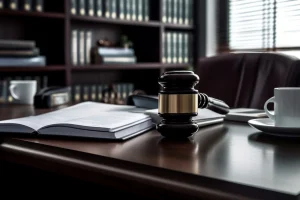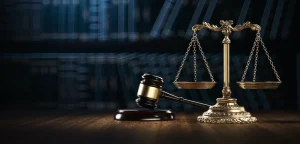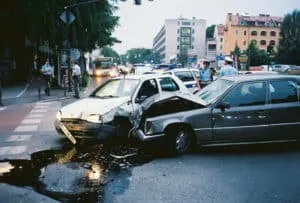Overview of Car Accidents in Los Angeles
Los Angeles is known for its busy streets and freeways, making it a hot spot for car accidents. With a large population and an extensive network of roads, the city sees a high frequency of traffic incidents. From fender benders to more serious collisions, car accidents in Los Angeles can significantly impact drivers and pedestrians.
Understanding the trends and causes of these accidents is important for improving road safety and reducing the number of injuries and fatalities. In this overview, we will take a closer look at the statistics, common causes, and implications of car accidents in Los Angeles and explore the efforts being made to address this ongoing issue.
Importance of understanding how car accident settlements work
Knowing how car accident settlements work is crucial for anyone involved in an automobile collision. Settlements provide financial compensation for medical bills and property damage, which can alleviate the burden of these costly expenses. This compensation can also help cover lost wages due to time off work for recovery.
In addition to financial relief, settlements can save time and money by avoiding lengthy and expensive court battles. By settling, both parties can avoid the stress and uncertainty of a trial and come to a mutually beneficial agreement.
Seeking representation from a personal injury attorney can also be beneficial when navigating car accident settlements. An experienced attorney can provide valuable guidance and support throughout the process, helping to ensure fair compensation. They can also negotiate with insurance companies on behalf of the injured party, advocating for their best interests.
Understanding how car accident settlements work is important for obtaining fair financial compensation, saving time and money, and maximizing potential benefits. Seeking representation from a personal injury attorney can help achieve a favorable settlement and ease the overall burden of the aftermath of a car accident.
Understanding Car Accident Settlements
Car accidents can be a traumatic and overwhelming experience for those involved. Understanding car accident settlements is crucial for anyone navigating the aftermath of a collision. From knowing what factors determine the settlement amount to understanding the steps involved in the process, understanding this information can help individuals make informed decisions and ensure they receive fair compensation for their injuries and damages.
In this guide, we will explore key aspects of car accident settlements, including how they are calculated, the role of insurance companies, common settlement negotiation tactics, and steps to take to protect your rights and interests. By better understanding car accident settlements, individuals can confidently approach the situation and better position themselves to secure the compensation they deserve.
Definition and purpose of a car accident settlement
A car accident settlement is an agreement reached between the parties involved in a car accident to resolve their legal dispute without going to trial. A car accident settlement aims to compensate the victim for their injuries, property damage, and other losses resulting from the accident. It is designed to help the victim recover financially and move on from the incident.
The settlement process typically begins with the victim filing a claim with their insurance company. The insurance company then investigates the claim, assesses the damages, and negotiates a settlement with the other party’s insurance provider. Car insurance laws play a significant role in this process, as they determine the types and limits of coverage available to the parties involved.
In California, victims of car accidents have various options for raising claims, including filing a claim with their own insurance company, filing a third-party claim with the at-fault party’s insurance company, or pursuing legal action through a personal injury lawsuit. Each option has its requirements and limitations, and it is important to understand the laws and regulations that govern car accident settlements in California.
Parties involved in a car accident settlement
The parties involved in a car accident settlement typically include the drivers of the vehicles, their insurance companies, and the victims or their legal representatives. The drivers are responsible for reporting the accident to their insurance companies and providing all necessary information for the claim.
The insurance companies then assess the damages and negotiate a settlement with the victims or their representatives. The victims are responsible for providing evidence of their injuries, damages, and any other losses resulting from the accident. They also have the right to seek legal representation to ensure they receive fair compensation.
The insurance companies’ roles include investigating the accident, determining liability, and offering a settlement amount that covers the victims’ damages. The victims’ roles include gathering evidence, documenting their injuries, and negotiating with the insurance companies to reach a fair settlement. Each party is responsible for communicating effectively, providing the necessary documentation, and working towards a resolution compensating the victims for their losses.
Determining Fault and Liability
Determining fault and liability is a crucial aspect of any legal inquiry, especially in cases of accidents, injuries, or property damage. It involves establishing who is responsible for the incident, the resulting harm, and to what extent. This process often involves thoroughly examining the evidence, testimonies, and relevant laws to make an informed determination.
Understanding the legal principles and rules behind fault and liability is essential in navigating legal proceedings and ensuring that the responsible party is held accountable for the damages caused. In the following sections, we will explore the key factors and considerations involved in determining fault and liability in various contexts, such as personal injury cases, auto accidents, and property damage claims.
Additionally, we will discuss the roles of insurance companies, legal standards, and other important aspects that come into play when assigning fault and liability in legal matters.
Establishing fault in a car accident
In the event of a car accident, gathering evidence, such as photos of the scene, vehicle damage, and injuries, as well as obtaining witness testimony and police reports, is crucial to establish fault. Witness testimony can provide valuable insight into the events leading up to the accident, while police reports document the facts and findings of the investigating officers.
Proving negligence or statutory negligence is important in determining liability for the accident. Negligence refers to the failure to exercise reasonable care, while statutory negligence involves violating traffic laws or regulations. An experienced car accident lawyer can assist in gathering the necessary evidence and building a case to prove negligence or statutory negligence.
It’s important to know that different states have different fault-based systems for assigning liability for accidents, and all drivers must carry auto insurance to cover damages and injuries resulting from accidents. Therefore, understanding the state’s fault system and insurance requirements is essential in seeking compensation for car accident damages.
Role of insurance companies in determining fault for car accidents in California.
Insurance companies play a crucial role in determining California car accident fault. In a fault-based system, like the one in California, the insurance companies of the parties involved in an accident investigate and determine who is at fault. This determination is based on evidence such as police reports, witness statements, and the state’s traffic laws.
The fault-based insurance laws in California directly affect the determination of liability. The at-fault party’s insurance company will be responsible for covering the costs of the damages and injuries resulting from the accident. This means that the at-fault driver’s insurance company will typically be the first point of contact for filing a claim.
One must gather evidence of the accident to file a claim with the at-fault driver’s insurance company, such as photographs, witness statements, and a copy of the police report. If the at-fault driver is uninsured, one may need to rely on their insurance coverage, such as uninsured motorist coverage, to handle the costs of the accident.
Insurance companies are responsible for determining fault in car accidents in California, and fault-based insurance laws impact the process of determining liability. In the event of an accident with an uninsured driver, one may need to rely on insurance coverage to handle the costs.
Importance of gathering evidence to support your claim
When gathering evidence to support your claim, it is crucial to collect photos of the accident scene to represent the damage and circumstances visually. Details about weather conditions and the time of day are important to establish the conditions where the incident occurred and can support your version of events.
Personal observations such as injuries sustained or vehicle damage can provide direct evidence of the impact and strengthen the validity of your claim. Additionally, information from witnesses can corroborate your account and provide additional perspectives on the accident.
Each type of evidence is integral in strengthening your case and increasing your settlement amount. Photos provide tangible evidence of the damage and can help convince insurance adjusters of the extent of the accident. Weather conditions and time of day can support your assertion of visibility or road conditions during the accident.
Personal observations and witness statements can further validate the occurrence and potential liabilities. Gathering various types of evidence is essential in building a strong case to support your claim and ensure a fair settlement.
Medical Treatment and Expenses
When it comes to managing medical treatment and expenses, it is important to understand the various options available and the potential financial implications. Whether it’s seeking out the best treatment plan for a specific condition, understanding insurance coverage, or exploring alternative avenues for financial assistance, navigating the world of medical expenses can be overwhelming.
This section will explore the different aspects of medical treatment and expenses, including tips for managing costs, understanding insurance coverage, and seeking financial assistance when needed. By gaining insight into these topics, individuals and families can better prepare for and manage the financial aspect of their healthcare needs.
Seeking immediate medical care after a car accident
Seeking immediate medical care after a car accident is crucial for both your health and the car accident settlement process. Getting medical attention promptly can help ensure any injuries sustained are properly documented and treated, which can impact the outcome of your settlement. Additionally, seeking immediate medical care can prevent any injuries from worsening over time.
If you are involved in a car accident, the first step is to call 911 for emergency medical assistance. If you can, try to receive treatment from paramedics at the scene or be taken to the emergency room for a thorough evaluation. It is important to follow up with a healthcare provider for ongoing care to monitor and treat any lingering injuries.
Failing to seek immediate medical care can negatively impact your health and weaken your case for a car accident settlement. It’s essential to prioritize your health by seeking medical care promptly after a car accident to ensure you receive the necessary treatment and to protect your legal rights.
Documenting all medical treatments and expenses incurred
As a result of the car accident, I have incurred several medical treatments and expenses. I have received care from doctors, chiropractors, and physical therapists and have kept detailed records of all bills and reports from each care provider. In addition to the tangible expenses, I have also experienced intangible effects such as physical pain and mental suffering.
These intangible effects have impacted my daily life, causing me to miss several work days and rendering me unable to execute routine tasks. The combination of medical treatments, expenses, and intangible effects has significantly impacted my well-being and overall quality of life.
Role of health insurance in covering medical bills
Health insurance is crucial in covering medical bills incurred from personal injury cases. It provides financial support for ongoing medical care, treatment, and any long-term prognosis stemming from the injury. Health insurance can help alleviate the burden of medical expenses and ensure that individuals receive the necessary care to recover fully.
Factors such as disabilities, scarring, and age can impact the coverage provided by health insurance. These factors may require additional documentation to prove the extent of the injury and the ongoing medical needs. Furthermore, age may influence the types of treatment and care the insurance covers.
Essential documentation required to verify insurance coverage and ensure adequate financial support for medical bills include the insurance policy, medical records documenting the injury and treatment, and any documentation of disabilities or long-term prognosis.
Health insurance is vital in providing financial support for medical bills related to personal injury cases, ensuring individuals receive the ongoing care and treatment they need for a full recovery.
The Role of Insurance Companies
Insurance companies provide financial protection and peace of mind to individuals, businesses, and organizations. From protecting against unexpected medical expenses to providing coverage for property damage, insurance companies offer a wide range of products and services designed to mitigate risk and safeguard assets.
We will explore insurance companies’ various roles in the modern economy, including their function in risk management, their impact on economic stability, and their role in promoting responsible behavior and community resilience. By understanding insurance companies’ essential role, we can gain insight into their importance in our daily lives and the broader financial landscape.
The process of filing an insurance claim
Filing an insurance claim involves several important steps. First, gather evidence to support your claim, such as photos, videos, and witness statements. Next, write a demand letter to the insurance company detailing the incident, the damages or injuries sustained, and the amount you request for compensation. Be sure to include any relevant documents, such as medical records, receipts, and police reports, to support your claim.
After submitting your claim, it is important to communicate with the insurance claim adjuster. Keep the conversation professional and provide any additional information or evidence they may request. Be prepared to negotiate a settlement offer, and consider seeking legal assistance if you are not satisfied with the offer.
Key tips for handling conversations with the insurance claim adjuster include being polite and respectful, keeping detailed records of all communication, and seeking clarification on any points you do not understand. Remember that effective communication can greatly impact the outcome of your claim.
A Settlement Agreement Is a Binding Legal Contract
A settlement agreement is a crucial legal document that outlines the terms and conditions of a resolution between two parties. To draft a formal settlement agreement, clearly outline the settlement terms, including the agreed-upon compensation or resolution. Incorporate any relevant details, such as the parties involved, the date of the agreement, and the reasons for the settlement.
Release clauses are essential in a settlement agreement to protect against future liabilities and potential lawsuits. These clauses ensure that once the settlement agreement is reached, neither party can bring any further legal action related to the dispute.
Key elements that should be included in a settlement agreement to ensure it becomes a binding legal contract include the mutual agreement of both parties, consideration or something of value exchanged as part of the settlement, clear and concise language that outlines the terms, and the signatures of all involved parties.
It is important to ensure that the settlement agreement complies with all legal requirements to hold up in court. Overall, a settlement agreement should be meticulously drafted to ensure that all parties are protected and the settlement terms are clearly defined.
You Don’t Have To Sign a “Take It or Leave It” Settlement Agreement Provided By the Other Party
It is crucial to carefully review any settlement agreement the other party provides before signing rather than feeling pressured to accept a “take it or leave it” offer. Having a skilled lawyer review the agreement is essential to ensure that any unfavorable terms are removed before finalizing the settlement. Once both parties sign, the settlement agreement becomes a binding legal contract.
By carefully reviewing the agreement and demanding the removal of any unfavorable terms, you can ensure that the settlement is fair and favorable to you. Failing to do so may result in unfavorable terms being enforced, putting you at a significant disadvantage.
Therefore, it is vital to take the time to thoroughly review and negotiate the terms of the settlement agreement with the assistance of a skilled lawyer before finalizing the settlement. This will help protect your rights and ensure that the agreement is in your best interest.
The Opposing Party Will Use Every Trick in the Book To Save Themselves Money
In a legal dispute, the opposing party, especially an insurance company, may use various tricks to save themselves money. One common tactic is to delay the proceedings as much as possible, hoping that the plaintiff will give up or accept a lowball settlement out of frustration or financial need.
The insurance company may also dispute the extent of the injuries or damages suffered by the plaintiff, claiming that they are not as severe as stated. This tactic is used to downplay the compensation owed to the plaintiff. Another trick is offering a lowball settlement, hoping that the plaintiff will accept it to avoid further legal expenses or uncertainty. Moreover, the opposing party may try to create doubt about the fault or liability, shifting the blame onto the plaintiff or another party. Overall, plaintiffs must know these tactics and seek legal counsel to navigate them.
Insurance Policy Limitations Might Make It Impossible To Collect the Full Value of Your Claim
Understanding insurance policy limitations is crucial in the event of a car accident, as they can greatly impact the full value of a claim. Policy limitations refer to the maximum amount that an insurance company will pay for a claim, including coverage for injuries and property damage.
Common insurance policy limits in California include $15,000 for bodily injury per person, $30,000 for bodily injury per accident, and $5,000 for property damage. These limits may significantly impact victims’ ability to receive full compensation for their injuries and property damage in serious accidents.
Insurance claim adjusters play a vital role in assessing the damages and offering settlements based on the policy limitations. They may use these limits as a basis for their settlement offers, which may not always cover the full extent of the victim’s losses.
Individuals involved in car accidents need to be aware of their insurance policy limitations and those of the liable party, as they may need to pursue additional legal action to seek full compensation for their damages. Understanding these limitations is essential in ensuring that victims receive the necessary compensation to recover fully from the accident.
Contact the Personal Injury Lawyer at Phoong Law Before You Start Negotiating a Settlement
If you have been involved in an accident or suffered a personal injury, it is important to contact the personal injury lawyer at Phoong Law before you start negotiating a settlement. The experienced team at Phoong Law understands the complexities of personal injury cases and can help you obtain a favorable settlement for your situation.
When you reach out to Phoong Law, be sure to explain the details of your accident or injury case. They will be able to assess your situation and provide guidance on the best course of action to take. Whether you were injured in a car accident, slip and fall, or other incident, their team is dedicated to advocating for your rights and helping you receive the compensation you deserve.
To contact the personal injury lawyer at Phoong Law, you can call 866-GOT-PAIN or send them a message for assistance. By contacting Phoong Law, you can ensure that your interests are protected and that you receive the best possible outcome for your personal injury case.
DISCLAIMER: The information provided in this blog post is for general informational purposes only and should not be construed as legal advice. Every car accident case is unique, and you should always consult with an attorney to discuss your case’s specific facts and circumstances.
While Phoong Law strives to provide accurate and up-to-date information in this blog post, the law is constantly evolving, and additional factors or exceptions may apply to your case. Phoong Law makes no warranties or representations as to the accuracy of the information contained in this blog post.
























